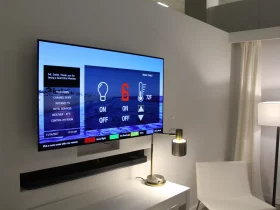Are you an Amazon Flex driver wondering when the blocks of time are released? Well, you’re not alone.
Many drivers are eager to know the exact timing of when Amazon Flex releases blocks each week.
The truth is, there is no specific time each week. Amazon Flex releases blocks of times on Fridays, but the timing can vary depending on your time zone.
In this article, we’ll explore the factors that influence the release of time blocks and how you can stay informed. So, let’s dive in and find out when Amazon Flex releases blocks of times for your area.
What Are Amazon Flex Blocks?
How Do Amazon Flex Blocks Work?
Amazon Flex blocks are the shifts that drivers can claim to deliver packages for Amazon Flex. These blocks represent a specific period of time during which drivers are expected to complete deliveries. Each block has a designated number of hours and an estimated earnings amount associated with it. In essence, Amazon Flex blocks are similar to shifts at a regular job.
To secure a block, drivers must be quick to claim them when they are released. Amazon Flex releases blocks of time on Fridays, but the exact timing can vary depending on your time zone. The release of these blocks is random and based on Amazon’s needs and the availability of other drivers in your area. It is important for drivers to understand that they have no control over when the blocks are released.
Once a driver has claimed a block, they are expected to make themselves available and ready to start delivering packages during the specified time period. The duration of these blocks typically lasts from 2 to 6 hours, depending on the number of packages to be delivered. The more packages there are, the longer the block will be.
During a block, drivers use the Amazon Flex app to navigate to the assigned delivery locations, scan packages, and complete deliveries. It is important for drivers to follow the instructions provided by the app and ensure that packages are delivered accurately and on time.
How Many Packages Does Amazon Flex Have?
As an Amazon Flex driver, it’s important to understand the volume of packages you may be handling during your shifts. The number of packages can vary depending on several factors, such as the time of year, location, and the specific needs of Amazon at any given time.
On average, Amazon Flex drivers can expect to handle anywhere from 20 to 50 packages per block. This number can fluctuate based on factors such as the size of the packages and the distance between delivery locations. It’s essential to be prepared and organized to efficiently deliver these packages within the specified time frame.
During peak seasons, such as holidays or major sales events, the number of packages may increase significantly. It’s not uncommon for Amazon Flex drivers to handle over 50 packages per block during these high-demand periods. While it may seem challenging, it also presents an opportunity for drivers to earn more income by delivering a larger volume of packages.
Amazon Flex provides drivers with a delivery app that helps streamline the delivery process. The app provides drivers with the necessary information, including the delivery addresses, route optimization, and any special instructions for each package. This technology helps drivers efficiently navigate their routes, making it easier to deliver a higher volume of packages within the allotted time.
By understanding the average number of packages per block and being prepared for potential fluctuations, Amazon Flex drivers can effectively plan their shifts and maximize their earning potential. With proper organization and the support of the delivery app, drivers can efficiently handle the volume of packages and establish a successful career with Amazon Flex.
What Time Does Amazon Flex Release Blocks?
As an experienced Amazon Flex driver, I understand the importance of knowing when Amazon releases blocks for drivers to claim. The release of these blocks can vary depending on various factors, including Amazon’s needs and the availability of drivers in your area. In this section, I will provide insights into when Amazon Flex typically releases blocks and the best time to claim them.
When Is the Best Time to Claim Flex Blocks?
If you’re wondering when the best time to claim Amazon Flex blocks is, it’s important to note that the release of these blocks is random and can occur at any time throughout the day. However, there are a few strategies you can employ to increase your chances of securing a block:
- Early Morning: Many drivers report that Amazon tends to release a significant number of blocks early in the morning, typically between 5 am and 7 am. This is likely due to the high demand for deliveries during the day.
- Late Evening: Another popular time for block releases is in the late evening, usually between 7 pm and 9 pm. This is because Amazon often needs drivers to fulfill next-day deliveries and restock inventory for the following day.
- Weekends: Weekends can also be a good time to check for block releases, as there is typically higher demand for deliveries during this time. Keep in mind that the specific release times may vary.
Remember that block release times can vary depending on your location and the demand in your area. It’s important to experiment with different times and observe patterns to determine the optimal time for claiming blocks.
By understanding when Amazon Flex typically releases blocks and employing effective strategies for claiming them, you can increase your chances of securing desired shifts and maximizing your earning potential.
How To Get Amazon Flex Blocks Quickly
1. Refresh the Amazon Flex App Regularly for New Offers
To increase your chances of getting Amazon Flex blocks quickly, it’s important to regularly refresh the Amazon Flex app. New offers can appear at any time, so checking the app frequently throughout the day is key. By doing so, you’ll be among the first to see and claim available blocks.
2. Accept Different Amazon Delivery Types
Being open to accepting different types of Amazon deliveries can also help you secure blocks more quickly. Amazon Flex offers various delivery options, including Prime Now, Amazon Fresh, and Whole Foods. By selecting multiple delivery types, you’ll have a wider range of blocks available to you, increasing your chances of finding one that fits your schedule.
3. Work on Improving Your Rating
Your rating as an Amazon Flex driver plays a significant role in determining the availability of blocks. Here are a few tips to help you improve your rating:
Provide A Quality Service
Deliver packages on time and handle them with care. Pay attention to any specific instructions provided by customers and ensure a positive delivery experience.
Meet Delivery Deadlines
Timeliness is crucial in the delivery business. Make every effort to meet the specified delivery deadlines to maintain a good rating.
Requests for Support
Respond promptly to any requests for support from customers or Amazon support staff. Address any issues or concerns in a professional and timely manner.
4. Take Advantage of the Preferred Scheduling Feature
Amazon Flex offers a Preferred Scheduling feature that allows drivers to reserve blocks in advance. Here’s how you can make the most of this feature:
Set Your Availability
Specify the days and times you’re available to work in the app. This will help Amazon Flex match you with available blocks that align with your schedule.
Confirm Your Reserved Blocks
Once you’ve reserved a block, make sure to confirm it within the designated time frame. Failure to do so may result in the block being released back into the system.
Get Customers’ Feedback
Providing excellent service during reserved blocks can lead to positive feedback from customers. This feedback can help you secure more reserved blocks in the future.
5. Use Reserved Blocks
Reserved blocks are blocks that you’ve previously reserved through the Preferred Scheduling feature. By utilizing these reserved blocks, you can ensure a consistent and reliable source of income. Make sure to prioritize working during these reserved blocks to maximize your earning potential.
6. Work During Peak Hours
Peak hours are typically the busiest times for Amazon deliveries. By working during these peak hours, you increase your chances of securing blocks quickly. These peak hours may vary depending on your location, so it’s important to familiarize yourself with the delivery patterns in your area.
7. Amazon Flex Grabbers
Amazon Flex Grabbers are third-party tools or apps that claim to help drivers secure blocks more quickly. While some drivers have reported success with these tools, it’s important to note that using them may go against Amazon’s terms of service. It’s recommended to rely on legitimate strategies and methods to secure blocks and avoid any potential violations.
Remember, securing Amazon Flex blocks quickly requires persistence, flexibility, and a commitment to providing excellent service. By following these tips and strategies, you can increase your chances of finding and claiming desired blocks, maximizing your earning potential as an Amazon Flex driver.
What are Reserved Blocks?
Reserved blocks are specific shifts that are set aside for certain drivers in the Amazon Flex program. These blocks are not available for everyone to claim and are typically offered to drivers who have demonstrated reliability, consistency, and a strong track record of delivering packages on time.
Why are they important?
Reserved blocks are highly valuable for Amazon Flex drivers because they provide a guaranteed opportunity to work and earn money. Unlike regular blocks, which are released randomly and can be quickly claimed by other drivers, reserved blocks are specifically assigned to individual drivers, giving them priority access to available shifts.
By having reserved blocks, drivers can have more control over their schedules and plan their work hours in advance. This allows them to better manage their personal commitments and maximize their earning potential by securing desired shifts during peak delivery times.
How to claim them?
To be eligible for reserved blocks, drivers must consistently meet Amazon’s performance standards, including maintaining a high delivery success rate and a positive customer rating. Additionally, drivers may need to fulfill certain requirements, such as completing a minimum number of deliveries or maintaining a high level of availability.
Amazon Flex drivers can increase their chances of being offered reserved blocks by consistently providing excellent service, delivering packages on time, and ensuring customer satisfaction. By maintaining a high performance rating and meeting the requirements set by Amazon, drivers can demonstrate their reliability and dedication, increasing their chances of being selected for reserved blocks.
When do they come up?
Reserved blocks are typically offered to drivers on a weekly basis. The exact timing of when reserved blocks become available may vary depending on the driver’s location and the needs of Amazon’s delivery network.
It is important for drivers to regularly check the Amazon Flex app for any notifications or updates regarding reserved blocks. These notifications will typically inform drivers of the availability of reserved blocks and provide instructions on how to claim them.
By staying proactive and consistently checking for updates, drivers can increase their chances of being offered reserved blocks and securing shifts that align with their preferences and availability.
Remember, reserved blocks are a privilege and are typically offered to drivers who consistently meet Amazon’s performance standards. By delivering excellent service, maintaining a high performance rating, and staying dedicated to their work, drivers can increase their chances of being selected for reserved blocks and enjoy the benefits they provide.
Amazon Flex Alternatives
While Amazon Flex is a popular option for earning money through package delivery, there are also alternative platforms that offer similar opportunities. These alternatives can be great options for drivers who may not have consistent access to Amazon Flex blocks or who are looking for additional ways to maximize their earnings. Here are a few alternatives to consider:
- DoorDash: DoorDash is a food delivery platform that allows drivers to deliver meals from local restaurants to customers’ doors. With DoorDash, drivers can choose their own hours and earn money by completing deliveries in their area. The platform is known for its flexibility and offers a straightforward sign-up process.
- Instacart: Instacart is a grocery delivery service that allows drivers to shop for and deliver groceries to customers. As an Instacart driver, you can set your own schedule and earn money by completing grocery orders. This can be a great option for drivers who prefer working in a retail environment and enjoy helping customers with their shopping needs.
- Postmates: Postmates is a versatile delivery platform that allows drivers to deliver a wide range of items, including food, groceries, and even office supplies. With Postmates, drivers can choose when and where they want to work, making it a flexible option for earning money. The platform also offers the ability to earn tips, which can increase your overall earnings.
- Grubhub: Grubhub is another popular food delivery platform that allows drivers to deliver meals from local restaurants. With Grubhub, drivers have the flexibility to choose their own hours and earn money by completing deliveries in their area. The platform also offers a transparent payment system, allowing drivers to see how much they will earn for each delivery before accepting it.
These alternative platforms can be a great way to supplement your income or to explore different types of delivery opportunities. By diversifying your options, you can increase your chances of finding available shifts and maximizing your earning potential. Keep in mind that each platform may have its own requirements and sign-up process, so be sure to research and choose the one that best fits your needs and preferences.
Frequently Asked Questions
How much can I make with Amazon Flex in a week?
The amount you can make with Amazon Flex in a week depends on several factors, including the number of blocks you are able to secure and the type of deliveries you are assigned. On average, drivers can earn between $18 to $25 per hour with Amazon Flex. However, it’s important to note that this amount can vary depending on various factors such as location, demand, and time of year. By consistently securing blocks and providing excellent service, you can maximize your earning potential with Amazon Flex.
What happens if there are no packages to be picked up for a block? Do you still get paid?
If there are no packages available for you to pick up during a block, you may still be eligible for compensation. Amazon Flex has a guaranteed minimum payment policy, which means that even if there are no packages to be delivered, you will still receive a minimum payment for your time. This minimum payment varies by region but typically ranges from $18 to $25. It’s important to keep in mind that this policy may vary depending on your location, so it’s always a good idea to familiarize yourself with the specific terms and conditions in your area.
Can you make a living off Amazon Flex?
While it is possible to make a living off Amazon Flex, it largely depends on your location, availability, and the number of blocks you are able to secure. Many drivers use Amazon Flex as a part-time gig to supplement their income, while others may choose to make it their full-time job. The flexibility of the program allows drivers to create a schedule that works for them. By consistently securing blocks, providing excellent service, and maximizing your earning potential, it is possible to make a living with Amazon Flex.
Is there a cap on Amazon Flex blocks?
There is no official cap on the number of blocks you can work as an Amazon Flex driver. However, it’s important to note that block availability is based on the needs of Amazon and the availability of other drivers in your area. The number of blocks you are able to secure may vary depending on factors such as demand, time of year, and your location. It’s recommended to check the app regularly and be proactive in claiming blocks to increase your chances of securing desired shifts.
Why do some Amazon Flex blocks pay more than others?
The pay for Amazon Flex blocks can vary depending on several factors. One major factor is the type of deliveries you are assigned. Some deliveries may require additional services or have specific requirements, which can result in higher pay. For example, delivering large or heavy items may pay more than delivering smaller packages. Additionally, the demand for certain delivery blocks can also affect the pay rate. Blocks during peak times or in high-demand areas may offer higher pay incentives to encourage drivers to claim them. By being flexible with the types of deliveries you accept and strategically choosing blocks, you can increase your earning potential with Amazon Flex.
Wrapping Up
By understanding the release patterns of Amazon Flex blocks and implementing effective strategies, drivers can increase their chances of securing desired shifts and maximizing their earning potential.
Checking early in the morning, late in the evening, on weekends, and regularly refreshing the app are some strategies that can be employed.
It is important to note that using third-party tools or apps to secure blocks may go against Amazon’s terms of service and should be avoided.
Additionally, drivers can improve their chances by accepting different types of Amazon deliveries, working on improving their rating, taking advantage of the Preferred Scheduling feature, using reserved blocks, and working during peak hours.













